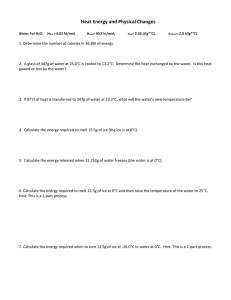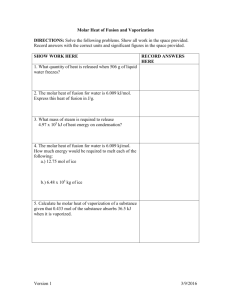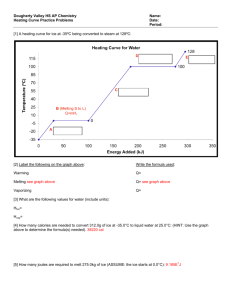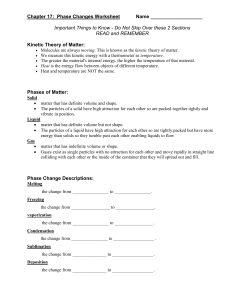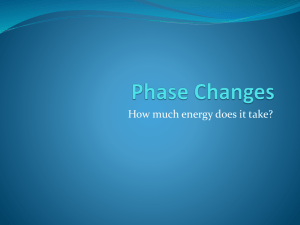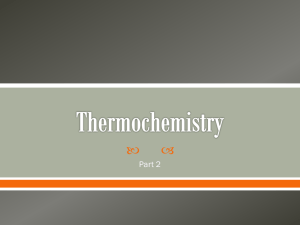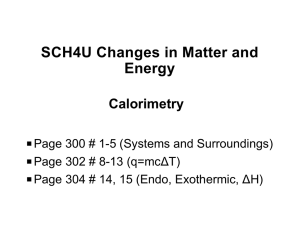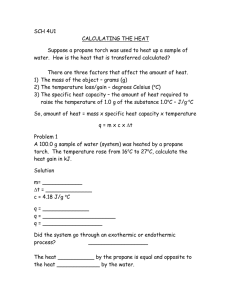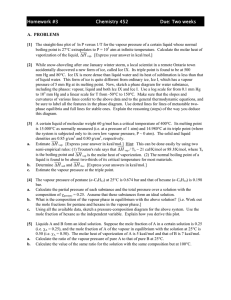File
advertisement
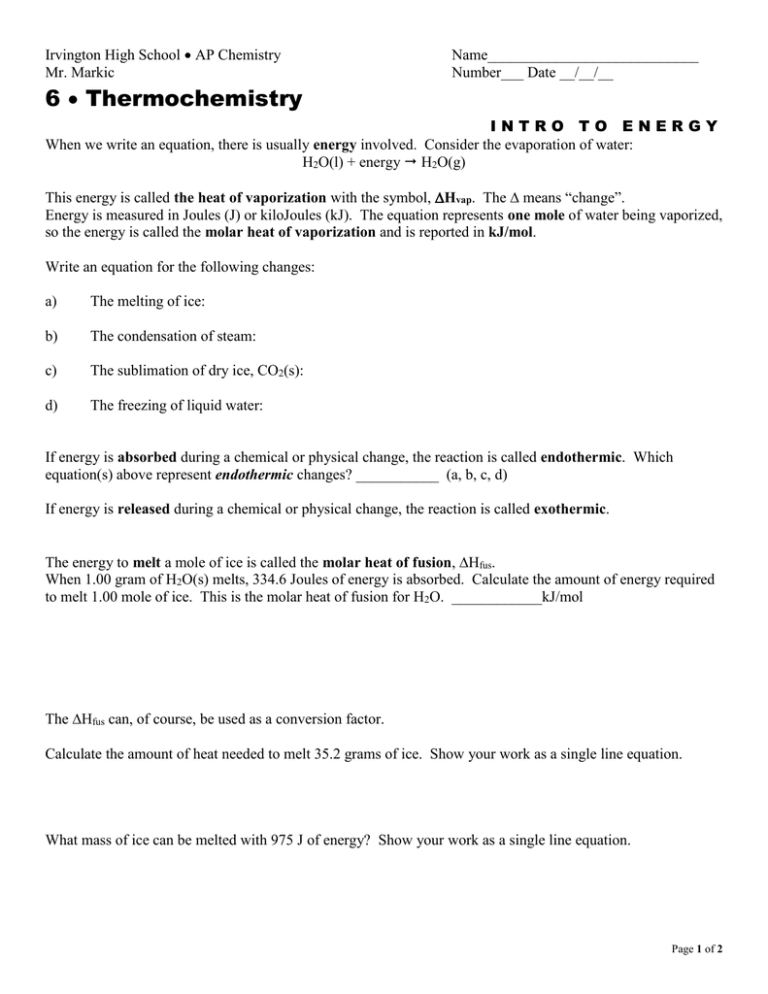
Irvington High School AP Chemistry Mr. Markic Name____________________________ Number___ Date __/__/__ 6 Thermochemistry INTRO TO ENERGY When we write an equation, there is usually energy involved. Consider the evaporation of water: H2O(l) + energy H2O(g) This energy is called the heat of vaporization with the symbol, Hvap. The means “change”. Energy is measured in Joules (J) or kiloJoules (kJ). The equation represents one mole of water being vaporized, so the energy is called the molar heat of vaporization and is reported in kJ/mol. Write an equation for the following changes: a) The melting of ice: b) The condensation of steam: c) The sublimation of dry ice, CO2(s): d) The freezing of liquid water: If energy is absorbed during a chemical or physical change, the reaction is called endothermic. Which equation(s) above represent endothermic changes? ___________ (a, b, c, d) If energy is released during a chemical or physical change, the reaction is called exothermic. The energy to melt a mole of ice is called the molar heat of fusion, Hfus. When 1.00 gram of H2O(s) melts, 334.6 Joules of energy is absorbed. Calculate the amount of energy required to melt 1.00 mole of ice. This is the molar heat of fusion for H2O. ____________kJ/mol The Hfus can, of course, be used as a conversion factor. Calculate the amount of heat needed to melt 35.2 grams of ice. Show your work as a single line equation. What mass of ice can be melted with 975 J of energy? Show your work as a single line equation. Page 1 of 2 PRACTICE: Show all work as single line equations: The accepted value of the heat of fusion of water, Hfus, is 6.03 kJ/mol. The accepted value of the heat of vaporization of water, Hvap, is 40.67 kJ/mol. 1. Calculate the amount of heat energy needed to boil 40.0 grams of water. 2. What mass of water can be vaporized with 55.0 kJ of energy. 3. How much heat is needed to vaporize 1.00 gram of H2O? 4. 100. grams of steam condenses to liquid water. What amount of energy is released? 5. 775 J of energy is added to liquid water at 100°C. What mass of water is vaporized? Page 2 of 2
